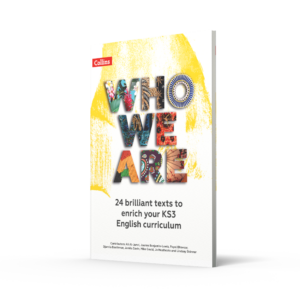Quite rightly, schools are taking steps to ensure that their English curriculums are more representative of the diverse country that we live in. Many students, regardless of their background, still feel isolated from what they have been learning in their lessons.
As teachers, we need to ask two questions before delivering content in the classroom:
1) How is the text that students are studying relevant to them?
2) What steps can we as teachers take to ensure students feel connected to what they are studying in their lessons?
This article will suggest some ways in which we can begin to map a more diverse English curriculum.
Ensure all students have a voice
When mapping your English curriculum, ensure that writers of colour, working class writers, LGBTQI+ writers, and female writers are included. Better representation in texts can be achieved through a variety of methods. Could you pair texts from the canon with postcolonial texts – for example, extracts from A Suitable Boy with Pride and Prejudice, or Wide Sargasso Sea with Jane Eyre?
Also ensure that students have a say in what they study. Make sure that there are regular conversations taking place in lessons where students can be passionate and enthusiastic about the texts that they are exploring. Also encourage and foster a climate where students can write for pleasure and present their work to the rest of their peers, free of fear or judgement. Are there opportunities for students to do independent work, such as private reading or coursework, where they can choose which authors they read or write about? For a spoken language activity, you could have students deliver a speech on an author of their choice and discuss with them why they chose to talk about this particular author. Other things you could try include providing diverse reading lists to students and having class book boxes and classroom anthologies to which students can contribute books and texts that they enjoy and want to read. It is important to also ensure that the library has books by a wide range of authors.
Ensure students are aware that ‘race’ is a construct
It is important students are aware that the division of society according to ‘race’ is an artificial construct. It would have been just as easy for us to divide society according to hair colour or eye colour. You could explore with students in class how this division is rooted in imperialism and colonialism which began in the 16th century and also how it was further entrenched in the 19th century as the colonial powers appropriated and reinterpreted ideas from Darwin’s new theory of evolution to justify their colonial policies. Could you also discuss with students how this division continues in the modern day and how it is reflected in literature? For example, you could look at ways in which different groups are marginalised, discriminated against and under-represented in literature. In class, you could take time to explore contexts of texts not only through the eyes of the author and the eyes of the modern reader, but also through the eyes of the marginalised in society at the time the text was written.
Introduce students to concepts of otherness
Students need to be aware of different concepts of ‘otherness’: that the dominant power in the world, nation or country at any time will often consider those around them to be the ‘other’. Explore with students what this means and how the dominant power will consider themselves and their culture superior and place value judgements on those that they rule, wish to rule or oppress. Also discuss how this is reflected in their history and literature. When certain Western nations, including Britain, France and other European countries, invaded many countries across the world and became dominant world powers, they considered themselves the superior culture. Through their eyes, the colonised countries and peoples became the ‘other’. This is an important concept: when students are studying literature from the ‘canon’, you could explore these different perspectives in class and discuss how the work might be viewed from a different critical viewpoint, such as a postcolonial, Marxist, queer or feminist lens. You could also discuss with students how ‘the other’ does not just apply to race or ethnicity. You could be ‘the other’ based on your gender, sexuality or class. Female, working class and gay writers are still underrepresented in our curriculums and it is important that they are studied and discussed by teachers and students alike.
Taking these steps will help ensure that your English curriculum is more diverse, and that it is more inclusive and representative of the students that you are serving.
Harmeet Matharu is an author, examiner and Head of English with over twenty years teaching experience in urban and rural schools. She has a particular interest in Classics and Postcolonial Literature.
Suggestions for wider reading:
Orientalism, Edward Said
Post-Colonial Theory and English Literature: A Reader, Edited and with an introduction by Peter Childs
The Second Sex, Simone de Beauvoir
Queer Theories: An Introduction, Lorenzo Bernini
Disability: The Basics, Tom Shakespeare
A Little Guide for Teachers: Diversity in Schools, Bennie Kara
You might also be interested in:
More Secondary English articles:






